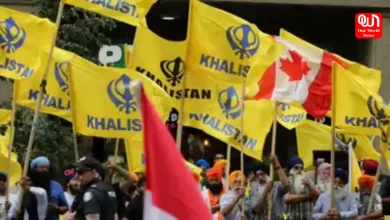Mahashivaratri 2025: Date, Timing, Customs, Prahar periods, Fasting guidelines, and Everything you should be aware
Mahashivratri – The Most Powerful Night of Lord Shiva’s Divine Energy
Mahashivratri: A Night of Awakening, Worship, and Union with Shiva
Mahashivratri, the significant night dedicated to Lord Shiva, with its numerous interpretations of events in his life on that day, is a festival and event that Hindus and devotees of Shiva eagerly anticipate every year. It is among the most dynamic and potent nights, and simply invoking the name of Lord Shiva brings amazing results on this day.
The atmosphere is charged with devotion, affection, vibrant energy, and undoubtedly, the chant of ‘Om Namah Shivay’. Individuals engage in prayer and meditation throughout the day and night, immersing themselves in profound meditation, prayer, and yielding to the divine.
Mahashivratri Date and Time in 2025
Mahashivratri in 2025 is set to be observed on February 26, 2025 (Wednesday). This celebration is important because it pays tribute to Lord Shiva and features numerous rituals and practices.
Tithi Details
- Chaturdashi Tithi Begins: February 26, 2025, at 11:08 AM
- Chaturdashi Tithi Ends: February 27, 2025, at 08:54 AM
Key puja Timings
- Nishita Kaal Puja: February 27, 2025, from 12:09 AM to 12:59 AM
- Shivratri Parana Time: February 27, 2025, from 06:48 AM to 08:54 AM
Ratri Prahar Puja Timings
- First Prahar: February 26, 2025, from 06:19 PM to 09;26 PM
- Second Prahar: February 26, 2025, from 09:26 PM to 12:34 AM (Feb 27)
- Third Prahar: February 27, 2025, from 12:34 AM to 03:41 AM
- Fourth Prahar: February 27, 2025, form 03;41 AM to 06:48 AM
The value and meaning of Mahashivratri
Mahashivratri is a crucial and meaningful day for Shiva worshippers globally. For many, Mahashivratri marks the occasion when Lord Shiva and Maa Parvati were ultimately joined together after ages of longing, devotion, and spiritual practice. For others, it marks the night when Lord Shiva executed Tandav, the dance representing cosmic creation, preservation, and destruction.
For others, it is the day when Lord Shiva comes down to Earth, particularly to his city ‘Kashi’, bringing happiness to both deities and humans, as well as Sadhaks.
Read more: Veteran Actress Bhagyashree Birthday- 23rd February!
Certain individuals hold the belief that celebrating Mahashivratri with sincere devotion removes past sins and paves the way to moksha. It is believed that staying awake on this night foster’s spiritual development, while fasting on this day cleanses both the body and mind, and it is a profoundly personal and purifying experience.
Mahashivratri Ceremonies and Worship Procedure
On Mahashivratri, worshippers adhere to a specific series of rituals to request and deserve the blessings of Lord Shiva. Although many of these rituals can be conducted at home, some individuals choose to carry them out in the renowned temples of Lord Shiva or at local temples nearby.
On Mahashivratri, worshippers adhere to a specific series of rituals to request and deserve the blessings of Lord Shiva. Although many of these rituals can be conducted at home, some individuals choose to carry them out in the renowned temples of Lord Shiva or at local temples nearby.
Numerous people also go to Shiva temples and provide water, milk, and bilva leaves to the Shivling. Additionally, participate in the Rudrabhishek ceremony, during which Lord Shiva is honored with Panchamrit, a blend of milk, yogurt, ghee, honey, and sugar.
Group chanting sessions are held where participants gather to chant ‘Om Namah Shivay’ or engage in the practice privately. Group recitations of the Mahamrityunjay mantra or various other mantras devoted to Lord Shiva are also conducted.
Numerous devotees also practice a complete day of fasting, typically Nirjala vrat, and engage in this act with immense devotion and affection for Lord Shiva. In reality, they only conclude this fast following the fourth Prahar, during the early morning hours.
Prior to that, they remain awake all night, reciting mantras, singing bhajans, and meditating. It is believed that remaining awake and devoted to Shiva during this night allows individuals to obtain his divine energy and blessings.
Read More : Bollywood Actor Rajpal Yadav Immerses His Father’s Ashes in the Holy Ganges at Prayagraj Mahakumbh
Guidelines for Fasting on Mahashivratri
The Shivratri fast begins at sunrise and lasts until the following morning, after the completion of the 4th prahar. Worshippers refrain from consuming any food that has a Tamsic quality and steer clear of items such as onion, garlic, alcohol, non-vegetarian meats, and similar products. In 2025, devotees of Shiva observing a fast on Mahashivratri will commence their fasting period during the Brahma Muhurat on February 26 and conclude it after the Brahma Muhurat on February 27. As worshippers participate in meditation and ‘jagran’ during Mahashivratri night, they should maintain a serene body and mind, free from the burden of processing and digesting any food.
A fasting practitioner is also anticipated to remain tranquil and collected throughout the day, steer clear of anger, and engage in spiritual pursuits all day long.
Shivling Abhishekam
Carrying out abhishek is a crucial aspect of Mahashivratri, with various offerings made to Lord Shiva holding distinct meanings and significance.
For instance, the milk presented to the Shivling is thought to bestow blessings for a harmonious life. The honey is believed to draw in prosperity and bring sweetness to life and relationships. The curd presented to Lord Shiva has a cooling effect and promotes good health, while Bilva leaves, also known as Bel patra, are thought to be Lord Shiva’s favorite.
Certain individuals additionally present sugarcane juice, gangajal, and Chandan to Lord Shiva.
Read More: Central Excise Day 2025: Background, Significance, Important Facts and Why is it Celebrated?
Top temples to explore
Even though all ‘bhakti’ and seva begin at home, some individuals naturally prefer to visit temples on Mahashivratri’s day and night. There, they perform a Rudraabhishek, recite with others, and meditate internally.
Many individuals hope to see temples such as Kashi Vishwanath in Varanasi, the Kashi Vishwanath temple at Banaras Hindu University, the Mahakaleshwar temple in Ujjain, and similar sites.
In Gujarat, the Somnath temple is where worshippers feel that Lord Shiva’s powers bestow blessings upon their lives, while the Aarti at the Kashi Vishwanath temple instills a sense of peace, tranquility, and an intense love for Shiva.
Individuals also enjoy the Bhasma aarti held at Mahakaleshwar, Ujjain, where Lord Shiva is adorned with holy ash.
We’re now on WhatsApp. Click to join.
Like this post?
Register at One World News to never miss out on videos, celeb interviews, and best reads.








